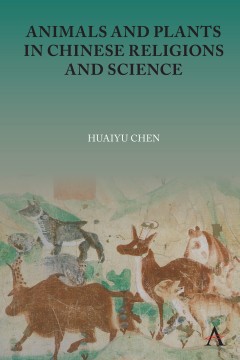Animals and Plants in Chinese Religions and Science
By Huaiyu Chen
Other Formats Available:
E-Book- About This Book
- Reviews
- Author Information
- Series
- Table of Contents
- Links
- Podcasts
About This Book
In ancient China, the tradition of observing nature is combined with Yin-Yang and the Five-Phase theories, which were later incorporated into the ancient arts of divination, including the technique of predicting weather changes by observing the behavior and health of animals. The observation of the close connection between animals and weather developed into the worship of animals, that is, what can be called the cult of animals. Plant science and technology in medieval China cannot be separated from the developments in agriculture, economics, and medicine, as well as cultural practice. The Chinese empire ruled most of East Asia in the medieval period. Numerous species of plants were observed, cultivated, harvested, and used in the vast land of China that spanned a wide range of biomes from boreal through to temperate and tropical, with most regions classed as subtropical. Besides indigenous plants, many plants from West, Central, South, and Southeast Asia were introduced into China and East Asia in general. Numerous zoomantic practices appeared in two sets of textual documents in the premodern Chinese bibliographical system, namely official documents and popular documents. Official documents were often compiled by government officials and served political governance objectives. These documents included official histories, annals, and institutional documents, as well as Confucian classics. The authorship or editorship of these documents was often explicit. Popular documents included strange writings, tales, legends, and religious documents from Buddhism and Daoism, which were often not compiled under the sponsorship and support of the court or government. They might be compiled by literati but lost original authorship. They did not serve political motivations and objectives, reflecting how people understood and interpreted correlative cosmology by observing animal behaviors at the local or non-bureaucratic level.
Reviews
The chapters are well-researched studies with rich and very reliable annotations […] it is an interesting contribution to an academic field that will develop into various directions —Monumenta Serica: Journal of Oriental Studies
In sum, Chen has gathered together a staggering corpus of animal- and plant-related literature from the disciplines of Sinology, science, environmental history, and beyond. The scope of the book, broad in timeframe, topics, and places, means that its findings can appeal to a range of scholars. —Bulletin of the School of Oriental and African Studies
Author Information
Huaiyu Chen is Associate Professor of School of Historical, Philosophical and Religious Studies at Arizona State University. He is the author of In the Land of Tigers and Snakes: Living with Animals in Medieval Chinese Religions (2023).
Series
Table of Contents
Acknowledgments; List of Figures; List of Charts; Introduction; Plant Science and Technology in Medieval China; Ordering Plants in the Buddhist World: A Medieval Botanical Taxonomy; Animal Divination and Climate: An Environmental Perspective on the Cult of the Pig; Zoomancy in Medieval China; The Changing Images of Zodiac Animals in Medieval Chinese Buddhist Literature; The Were-Tigers in Medieval China and Its Asian Context; The Animal Turn in Asian Studies and the Asian Turn in the Animal Studies; Bibliography; Index
Links
Stay Updated
Information
Latest Tweets



